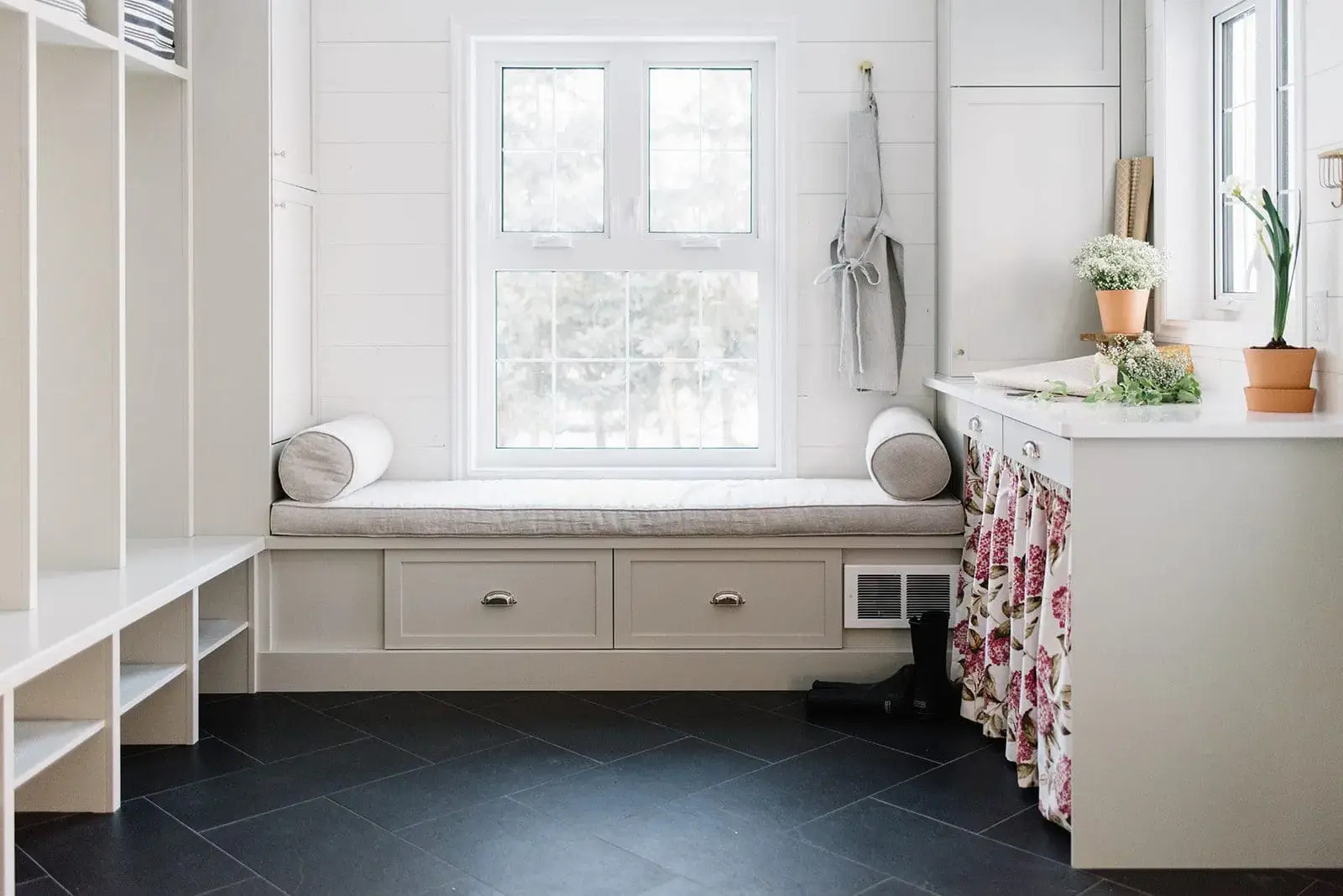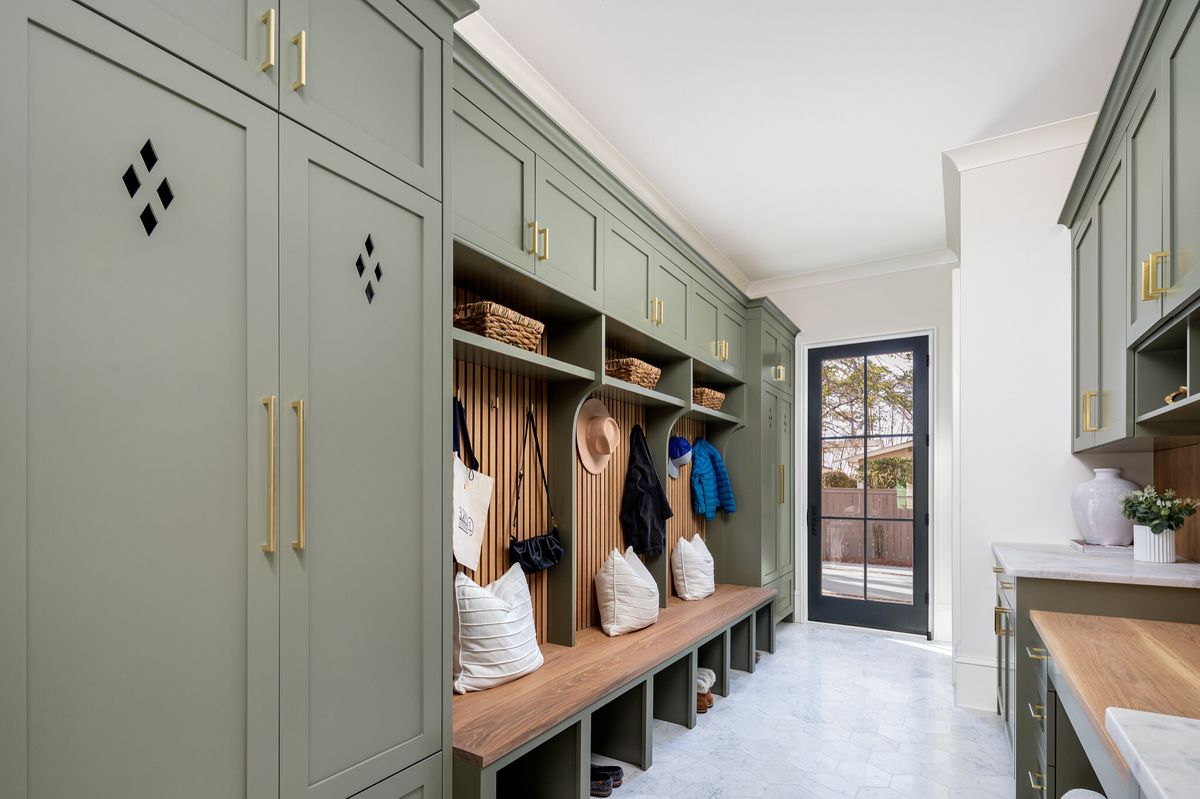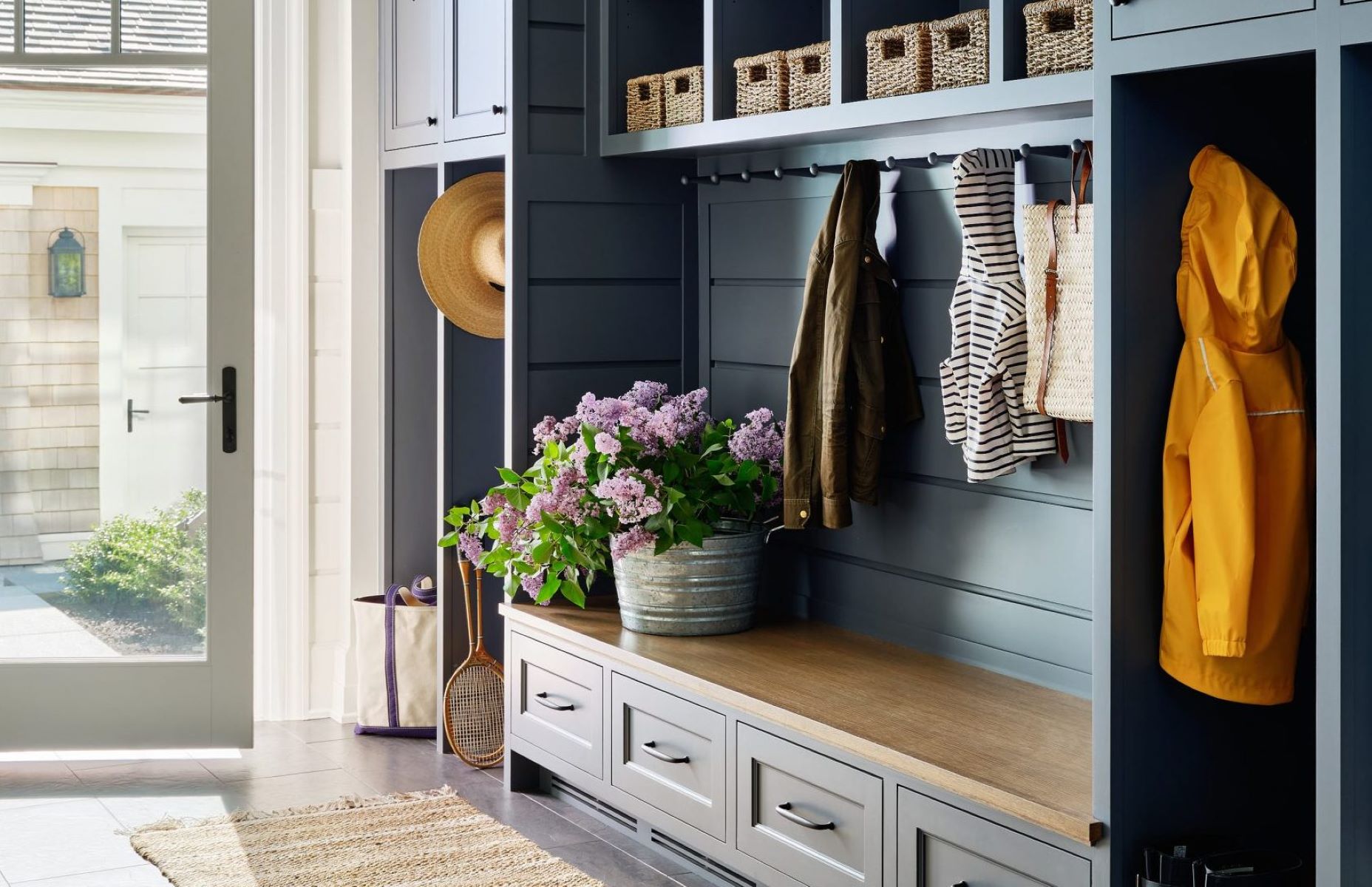Home>Ideas and Tips>Setting Up A Functional Mudroom For Everyday Life


Ideas and Tips
Setting Up A Functional Mudroom For Everyday Life
Published: October 31, 2024
Discover tips for designing a functional mudroom that enhances organization, efficiency, and style in your home. Create a clutter-free, practical space today!
(Many of the links in this article redirect to a specific reviewed product. Your purchase of these products through affiliate links helps to generate commission for Storables.com, at no extra cost. Learn more)
A mudroom is more than just a space where you hang your coat and drop your keys; it's a hub of functionality that can significantly enhance the organization and efficiency of your home. Whether you live in a small apartment or a spacious house, a well-designed mudroom can be a game-changer for managing daily essentials. In this article, we'll delve into the world of mudrooms, exploring how to design and set up a functional space that meets your family's needs.
The Importance of a Mudroom
Before we dive into the nitty-gritty of designing a mudroom, let's understand why it's such an essential part of any home. A mudroom serves several purposes:
- Storage: It provides ample storage for shoes, coats, backpacks, and other items that tend to clutter up living spaces.
- Organization: By keeping all these essentials in one place, you can maintain a sense of order and reduce clutter throughout the house.
- Efficiency: A well-designed mudroom can streamline your daily routine by providing easy access to what you need when you need it.
- Sanity: For many families, having a dedicated space for these items helps keep the main living areas tidy and reduces stress.
Read more: How To Set Up A Functional Mudroom
Determining the Space
The first step in setting up a functional mudroom is determining the space you have available. Here are some considerations:
- Location: Ideally, the mudroom should be located near the entrance of your home, whether it's the front door or a back door used by family members. This makes it convenient for everyone to use.
- Size: While a large space is ideal, even small areas can be functional with the right design. Consider repurposing an existing closet or corner of a room.
- Layout: Think about how you'll use the space. Will it be primarily for coats and shoes, or will it also serve as a laundry room or command center?
Designing the Mudroom
Once you've identified your space, it's time to start designing. Here are some key elements to include:
Cabinet Storage
Cabinets are a crucial part of any mudroom design. They provide ample storage for items like coats, backpacks, and shoes. Here are some tips for designing cabinet storage:
- Custom Lockers: Consider custom-built lockers that can be tailored to fit your family's needs. Each locker should have a rack for hanging coats and backpacks, as well as two small drawers for seasonal items.
- Drawer Layout: For each locker, include a rack to hang coats and backpacks. The drawers should be fully-extending drawers with wire mesh on the front to keep shoes from smelling musty.
- Electrical Outlets: If you plan to store items like vacuums or other electrical devices, install electrical outlets in the lockers to keep them charged and ready to use.
Decorative Elements
While functionality is key, aesthetics can also play a significant role in making your mudroom inviting and stylish. Here are some decorative elements to consider:
- Cabinet Color: Choose a color scheme that complements the rest of your home. In the example from Raising 3 Foodies, the cabinets were painted Dorian Gray from Sherwin Williams, matching the color used for the kitchen desk area.
- Hardware: Select hardware that fits your style, such as solid brass handles from Schaub Hardware.
- Wall Decor: Add some visual interest with wall decor like shiplap or wallpaper. In the example from Raising 3 Foodies, vertical shiplap was installed on one wall, painted Benjamin Moore Simply White, and adorned with floral design wallpaper on the top half.
- Flooring: Choose durable flooring that can withstand moisture and heavy foot traffic. Slate floor tiles or hardwood flooring with a commercial clear coat are excellent options.
Additional Features
In addition to cabinets and decorative elements, consider these additional features to enhance functionality:
- Rug: Place a non-slip, washable doormat or rug in the room to protect the floor from moisture and provide comfort underfoot.
- Bench: Include an upholstered bench for sitting while putting on or taking off shoes. This can also serve as a landing zone for items like keys and mail.
- Hooks: Install hooks on the wall for hanging coats, hats, backpacks, school bags, and purses at kid-friendly heights to encourage responsibility among family members.
- Shoe Racks/Baskets: Use shoe racks or baskets for shoe storage. These can be placed below each locker or on shelves for easy access.
- Drying Mat: Incorporate a drying mat for wet shoes or muddy boots to keep them off the floor and prevent moisture from seeping into other areas of the house.
Tips for Organizing Your Mudroom
Organizing your mudroom effectively is crucial for maintaining its functionality over time. Here are some tips:
-
Assign Zones:
- Assign specific areas for each family member to keep their items separate from others. This helps prevent clutter and makes it easier to find what you need.
- Use personalized cubbies, bins, or baskets labeled with names or photos to add a personal touch.
-
Use Bins & Baskets:
- Keep small items like winter gloves or hats organized using labeled bins and baskets.
- Place larger bins on the floor for easy access to shoes and other accessories.
-
Incorporate Seating:
- A bench or seating area provides a place to sit while putting on or taking off shoes, especially helpful for younger children who need more time to get ready.
- Choose a bench with built-in storage like pull-out drawers or cubbies underneath.
-
Add Doors (Optional):
- If possible, install doors to conceal clutter when the space is not in use. This keeps the mudroom looking neat and tidy even if it's chaotic inside.
-
Consider Climate & Lifestyle:
- Think about your climate and lifestyle when designing your mudroom. For example, if you live in an area with snow, consider additional storage for bulky winter items like boots and coats.
-
Incorporate Lighting:
- Adequate lighting is essential in a high-traffic area like a mudroom. Brighten up the space with sufficient lighting to ensure you can see what you're doing without straining your eyes.
Real-Life Examples
Let's look at some real-life examples of well-designed mudrooms:
Example 1: Raising 3 Foodies
In this example from Raising 3 Foodies, the family transformed their corner pantry into a larger mudroom by taking space from their kitchen. The resulting room is 9 feet long and 5.5 feet wide, providing ample space for six custom-built lockers each measuring 19 inches wide by 18 inches deep.
Each locker includes:
- A rack for hanging coats and backpacks
- Two small drawers for seasonal items like ski pants, gloves, and hats
- A drawer below for shoes with wire mesh on the front to keep them from smelling musty
- An electrical outlet installed in the broom and vacuum locker to charge their Dyson stick vacuum
The cabinets are painted Dorian Gray from Sherwin Williams, matching the color used for their kitchen desk area. The hardware is solid brass handles from Schaub Hardware. The wall opposite the lockers features 6-inch vertical shiplap painted Benjamin Moore Simply White with hooks for school backpacks. Floral design wallpaper by NewWall adorns the top half of this wall.
Example 2: Sweet Valley Acres
In this example from Sweet Valley Acres, the family designed their mudroom with durability in mind due to their high-traffic area with mud in spring, sand in summer, and snow in winter.
Key features include:
- Strong wall hooks to hang coats, hats, backpacks, school bags, and purses
- Shoe racks or baskets for shoe storage
- A drying mat for wet shoes or muddy boots
- Storage baskets for smaller items like hats, keys
- Open shelves for basket storage
- A small cabinet for car and house keys
- A basket for dirty clothes
The flooring is hardwood with a commercial clear coat which has held up well despite the challenging climate conditions.
Example 3: The Happy Housie
In this example from The Happy Housie, the family combined their laundry room with their entryway to create a multi-functional space that includes their mudroom.
Key features include:
- A large built-in closet storing coats, bags, and winter gear
- A three-door Brimnes Armoire from Ikea used when there was no front coat closet available
- Hooks on the wall for hanging coats and bags
- Under-bench storage baskets labeled by family member for easy access
This setup has been highly effective in keeping their entryway organized despite being a busy household.
Read more: Creating A Functional Mudroom In A Garage
Conclusion
Setting up a functional mudroom requires careful planning and attention to detail. By incorporating elements like custom cabinet storage, durable flooring options like slate tiles or hardwood flooring with commercial clear coats, decorative features such as shiplap or wallpapered walls along with practical additions like drying mats or under-bench storage bins labeled by family member can make this space both stylish yet highly functional.
Remember that every family is unique; therefore tailoring your design according to your specific needs whether it’s additional storage space due to bulky winter items or incorporating seating areas specifically designed keeping younger children’s needs in mind will ensure that your newly designed mudroom becomes an integral part of daily life making mornings smoother afternoons less stressful while keeping overall home organized clutter-free.
Happy organizing
Was this page helpful?
At Storables.com, we guarantee accurate and reliable information. Our content, validated by Expert Board Contributors, is crafted following stringent Editorial Policies. We're committed to providing you with well-researched, expert-backed insights for all your informational needs.















0 thoughts on “Setting Up A Functional Mudroom For Everyday Life”